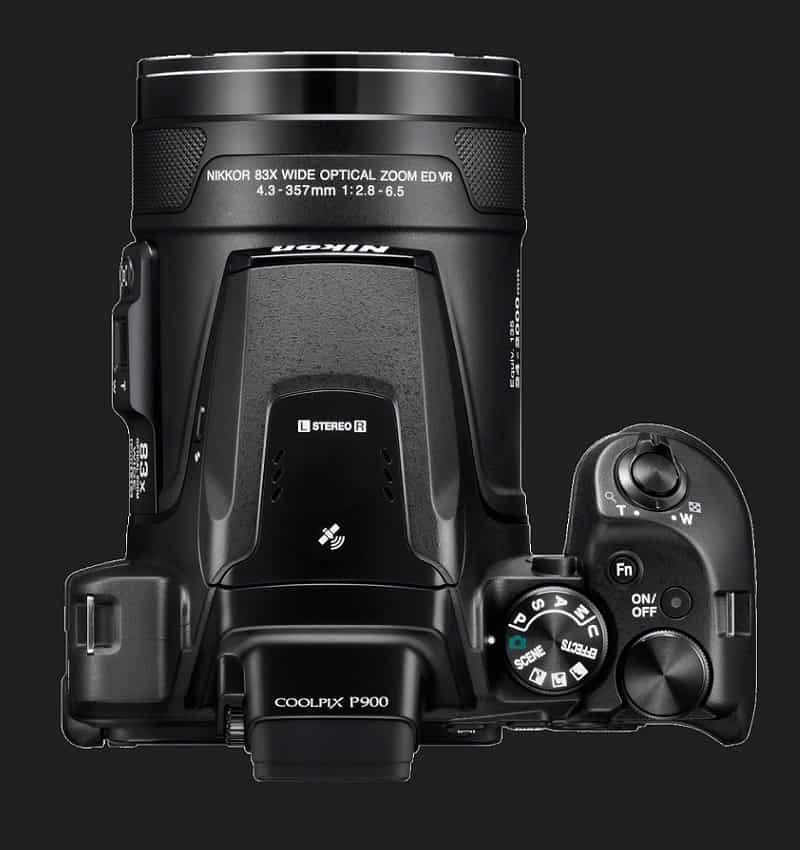

Preventing camera shake is of the utmost importance in astrophotography.
NIKON P900 FULL
With Time setting, the shutter opens with a single full-press of the shutter-release button, then it closes with another full press.

With Bulb setting, the shutter remains open while the shutter-release button is being pressed, and it closes with the release of the button. For an exposure time over 30 seconds, the camera needs to be set to Bulb or Time. Long-exposures are commonly used in astrophotography to accumulate faint light from the stars. This allows easy shooting of the starry sky with the fixed-mount method for beginners.
NIKON P900 ISO
By setting the camera with a high ISO sensitivity, a fast shutter speed can be used to achieve correct exposure. High image quality after long exposure time at high sensitivity is required. Superb performance at high ISO sensitivity A wide variation of effective pixels from 16.2 megapixels in the FX format providing superior high sensitivity performance with a large pixel pitch, to 36.3 megapixels for capturing ultra-high-definition images of star field is available. All the current Nikon digital SLR cameras feature over 15 megapixels. Generally speaking, excellent high ISO sensitivity performance and a large number of effective pixels are regarded as advantageous factors for astrophotography. Sufficient number of effective pixels on the image sensor The power of their super-telephoto zoom rivals that of astronomical telescopes, achieving amazing close ups of the moon and even capturing images of the planets. The camera’s compact and lightweight body makes an excellent companion for casual shooting of the stars, and despite the smaller size, its image sensor size is more than adequate to produce beautiful images of the starry sky.Ĭompact cameras in general are not recommended for shooting star clusters or nebulae, but the COOLPIX P900 and P610 are exceptions. The Nikon 1 J5 featuring backside illumination image sensor is the best option for astrophotography use. Nikon 1-series Advanced Cameras with Interchangeable Lenses They are ideal for almost any category of astrophotography. Its Dual Detect Optical VR reduces the amount of camera shake in your images by providing up to five stops of compensation.The larger image sensor of digital SLR cameras compared to that of Nikon 1 or COOLPIX cameras means it is able to receive faint light from the stars effectively, resulting in brilliant images. The Nikon P900 4.3-357mm f/2.8-6.5 lens has 35mm equivalent optical zoom range of 24-2000mm, which enables shooting in a variety of situations, and lets you shoot far-away subjects such as wildlife, sporting events, or even the moon.
NIKON P900 1080P
The image sensor also produces full HD 1080p videos.Ĩ3x Optical Zoom Lens with Dual Detect Optical VR Nikon P900 16 effective megapixels deliver high-resolution images and the CMOS image sensor helps to record high-quality images with low noise.
NIKON P900 MANUAL
The camera also shoots full HD 1080p video, has built-in Wi-Fi, NFC, and GPS, and manual exposure control. A vari-angle TFT LCD screen and an electronic viewfinder allow you to review and compose images, as well as navigate the menus. The P900 features Dual Detect Optical VR, providing up to five stops of compensation, and reducing the appearance of camera shake in your images. For an even further reach, the camera also has 166x Dynamic Fine Zoom, and 332x digital zoom, effectively quadrupling the optical zoom. The camera has a 16MP CMOS sensor and a built-in lens with a 35mm equivalent focal length of 24-2000mm. The Nikon P900 Digital Camera from Nikon.


 0 kommentar(er)
0 kommentar(er)
